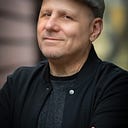Member-only story
A Better Way to Pay Attention
Try less
In 1958, a British psychologist named Donald Broadbent posited the “filter model” of attention (also known as the “bottleneck model”). The world floods our senses with data, like a fire hose. Our brain’s ability to process this data is limited, so it deploys attention as a means to prioritize all that information, to control the fire hose.
It’s a compelling theory, one that intuitively seems to make sense. Attention, we assume, is like a bank account we draw down, or a hard drive with limited capacity. We’ve all experienced that sensation of being overwhelmed by too much information. So much bombards us that nothing sticks. Several studies have found we routinely overestimate our ability to multitask.
But what if Broadbent’s theory is flawed? What if the human capacity for attention is not finite but, rather, that we’ve been going about “paying attention” the wrong way? As Alan Allport, an experimental psychologist at Oxford University, once wrote, “No such upper bound [of attention] has been identified, either generally or within a specific processing domain.” Maybe when our attention short-circuits, it’s because we’ve exhausted our effort. Maybe we haven’t hit capacity, but are merely tired.
To paraphrase the great philosopher Jean-Jacques Rousseau, often what we consider natural or “the way things…

